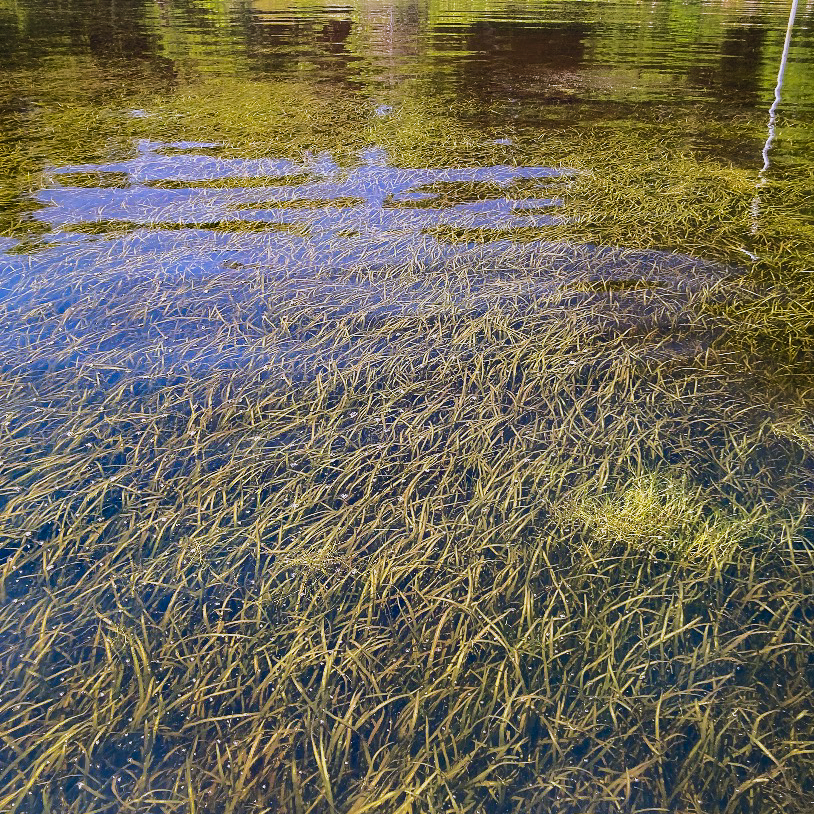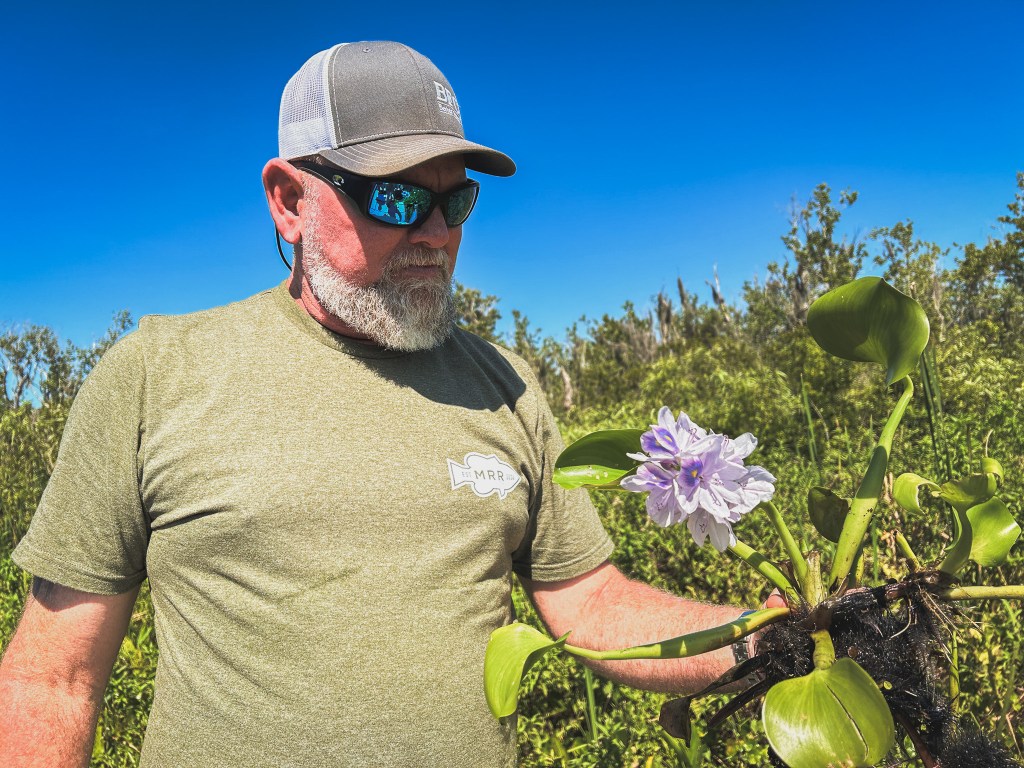
Joe Balog’s a “credit where credit is due” kind of guy, but he’s also a “good is not good enough” kind of guy.
It’s not a Jekyll and Hyde thing; rather, it’s a dichotomous perspective that drives his passion-fueled pursuit to save something he holds dear.
Let’s start with the backstory: It all began with Balog’s childhood dream of what he’d hoped his adult life would include. Like many others, that aspiration involved catching big bass on Florida’s St. Johns River (site of the 2025 Bassmaster Elite Series season opener).

Flash forward several decades and Balog saw that dream diminish. After living most of his life in Michigan, the outdoor media pro with a degree in Fisheries Science Management from Michigan State University moved to Florida in 2015 and brought with him grand hopes of expanding on the fishing trips of his youth. Sadly, Balog found the Sunshine State’s longest and only north-flowing river in a state of dramatic downturn.
Water quality and the river’s storied bass fishing had spiraled, but rather than lament what’s lost, Balog’s doing something about it. Specifically, he’s spearheading a nonprofit organization he named Mighty River Recovery. The mission: Improve fish and wildlife habitat on his beloved St. Johns.

“That is the trigger point of why we started this group,” Balog said of the St. Johns decline. “I had fished and spent a lot of time in Florida as a kid to the point that it became a (goal), ‘Someday, I’m going to live in Florida, that’s where I want to bass fish.’
“When I relocated to Florida, I walked into Highland Park Fish Camp — the last remaining fish camp on the Middle Basin of the St. Johns River — and all over the walls were pictures of bass between 11 and 15 pounds. After six years of fishing the St. Johns River, as a competent, established bass fisherman, the biggest bass I caught was 9 pounds — and that was an anomaly.”

Okay, that’s one angler relating his individual results, but hold your fire on the smack talk. Balog’s hardly alone in his observations. Tournament stats and local reports tend to support his assertions.
There was a time when pro-level events at the St. Johns would see several double-digit fish. Now, a single 10-pounder’s noteworthy.
Taking action
Driven by equal parts dismay and disappointment, Balog officially founded Mighty River Recovery in January. The organization assembles fishermen, stakeholders and Central Florida outdoors enthusiasts with three main focal points: habitat decline, unification of freshwater fishing voices and outdated management practices.
“We had this unbelievable, historical, legendary fishery in the 1970s and 80s, that produced some of the biggest bass in the country and had a huge tourism trade with multiple fish camps that hosted thousands of people operating along its banks,” Balog said. “In the course of 40 years, the fishery had declined to the point that one fish camp struggled to stay alive, no one came to the area to bass fish, tourism collapsed and big bass were (significantly less common).”
“I thought, ‘How in the world could this have happened and nobody raised a flag and said something’s wrong?’ Through my work with the Florida Fish and Wildlife Conservation Commission (FWC) and other groups, I’ve seen that there is a documented decline in the number of game fish being caught, there’s a gigantic decline in big bass being caught and there is really no attention being given to that decline.”
Consider Welsh poet Dylan Thomas’ plea at his father’s deathbed:
Do not go gentle into that good night.
Rage, rage against the dying of the light.
Balog felt an undeniable rage and, suffice to say, he was not gonna go gentle into any sense of the phrase “that good night.”
“Something had to be done, which was the reason we started Mighty River Recovery to unify people,” Balog said. “Everybody has their ideas, but we need to scientifically figure out what’s gone wrong.
“Once we do that, we hope to change things in a positive direction. Maybe it’s one thing, maybe it’s 10 things, but there’s been a tremendous decline in the resource and we think that should be changed.”
Due credit
Bringing this full circle, Balog lauds the FWC’s efforts to address one of the most glaring of St. Johns’s issues — the dramatic reduction in submersed aquatic vegetation (SAV). Eelgrass, in particular, filters water and provides prime bass habitat for spawning and feeding.
The St. Johns’ 310-mile course runs from marshy headwaters in lower Indian River County, to its Atlantic Ocean exit through Jacksonville’s Mayport Inlet. With lots of riverine habitat, the system also includes several sizable pools like the sprawling Lake George, where vast eelgrass acreage has largely vanished.
Over the years, Hurricanes have ravaged the St. Johns SAV, either by direct destruction or with resulting high, dark water that blocked light penetration and prevented photosynthesis. Natural cycles typically saw the eelgrass replenishing from seeds and/or rhizomes in the substrate, but seven years removed from the last significant hit (2017’s Hurricane Irma), St. Johns remains largely devoid of grass.

To protect isolated eelgrass patches, the FWC has built wire enclosures around these plants. Ideally, the enclosures will give the grass an opportunity to mature and expand by repelling grazers such as turtles and manatees, along with invasive tilapia, which are known to rip up stalks to chew off the algae.
Given the river’s current state, guarding eelgrass growth is a big step in the right direction. But, as Balog points out, this is but one piece of a complex puzzle.
“We certainly don’t want to say that the enclosures won’t work, and we hope tremendously that they add to the St. Johns habitat,” Balog said. “But we’re trying to organize a user group that’s going to be not just a volunteer effort, but a long-term group that has a big voice in Central Florida to start influencing change in some of the narratives and practices.

“The (FWC’s enclosure project) is a well-needed initiative that hopefully will do some good things for the St. Johns River. We’ve helped promote the enclosure effort, and we want to be part of it. We want to expand it in other parts of the river, but at the same time, we’re doing a lot more work.”
The quest for answers
Here’s the “good is not good enough” part.
Balog appreciates the state’s efforts. He values the work that’s been done with the funds available, and he understands that bureaucratic wheels turn slowly.
Still, he feels something in his gut. A gnawing ache that tells him the St. Johns needs more. The St. Johns deserves more.
The fact that eelgrass has broken historical regeneration cycles has raised eyebrows — Balog’s in particular. But while SAV status remains a critical issue, Balog knows its absence is likely symptomatic of larger ills.
“The eelgrass enclosure efforts can definitely work, but we’re taking a broader ecosystem approach,” Balog said. “We’re concerned with habitat management, we’re concerned with herbicide use and we’re concerned with exotic (non-native) fish.
“We’re talking to people about doing studies on different ways to control (invasive) aquatic plants. We’re involved in a lot of different things, all centered on a better habitat in the St. Johns River.”

As Balog notes, organized fundraising and awareness efforts have benefitted worthy causes such as Everglades restoration and manatee protection. He’s hopeful Mighty River Recovery can similarly serve the St. Johns bass fishery.
“There are saltwater advocacy groups, but there is really nothing (at the state level) organized for Florida freshwater fishing,” Balog said. “Our goal is to ultimately be that group. The St. Johns River is the key point right now. We’re trying to connect all the dots so everyone can be on the same page.”
For memberships, donations\ and volunteer opportunities, visit www.mightyriverrecovery.org.





